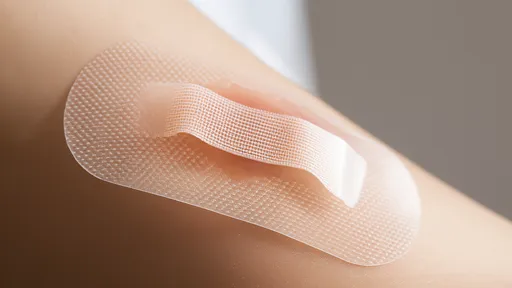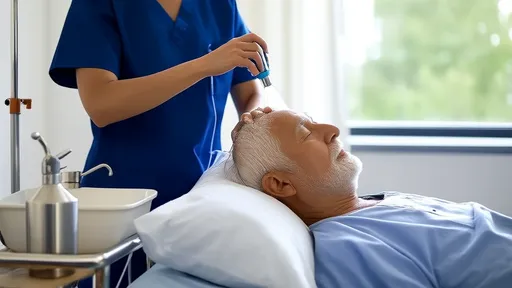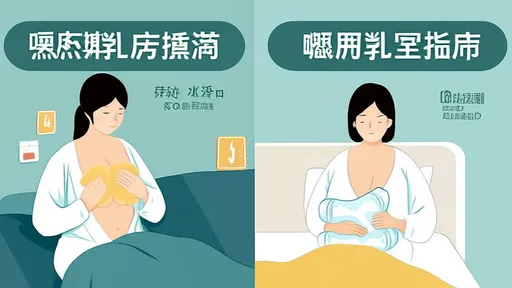For women navigating the complex transition of menopause, sleep disturbances often emerge as one of the most frustrating and persistent challenges. While hot flashes and night sweats dominate the conversation, the underlying issue of temperature dysregulation plays a far more significant role in sleep architecture than commonly recognized. The delicate thermal balance required for quality sleep becomes increasingly elusive during this life stage, creating a cascade of physiological effects that extend beyond mere discomfort.
The human body follows a sophisticated circadian rhythm of core temperature fluctuations, typically dropping by about 1-2°F during sleep onset. This natural cooling serves as a biological signal that prepares the body for rest. However, menopausal hormonal changes disrupt this finely tuned system. As estrogen levels decline, the hypothalamus—the body's thermostat—becomes more sensitive to subtle temperature variations, triggering inappropriate heat dissipation responses. The result is not just the familiar sudden heat surges, but a fundamental alteration in the body's ability to maintain optimal sleeping temperatures throughout the night.
Scientific research reveals that the sleep disturbances experienced during menopause cannot be attributed solely to the conscious awareness of overheating. Polysomnographic studies demonstrate increased wakefulness and reduced slow-wave sleep even in the absence of reported hot flashes. This suggests that subtler forms of thermal dysregulation may be equally disruptive to sleep continuity and quality. The thermal environment of the bedroom, therefore, becomes a critical factor in managing menopausal sleep challenges.
Traditional approaches to temperature regulation during sleep often prove inadequate for menopausal women. The standard recommendation of keeping bedroom temperatures between 60-67°F (15-19°C) may require individual adjustment. Many women find that their ideal sleeping temperature becomes significantly lower during menopause, sometimes by as much as 5°F compared to their premenopausal preferences. This heightened sensitivity necessitates a more personalized approach to sleep environment optimization.
Emerging solutions in sleep technology offer promising avenues for addressing these challenges. Phase change material bedding, for instance, absorbs excess body heat during temperature surges and releases it back when needed, maintaining a more stable microclimate. Similarly, moisture-wicking sleepwear with strategic ventilation zones can help manage both temperature and the accompanying perspiration. Perhaps most innovative are the new generation of smart mattresses and sleep systems that dynamically adjust surface temperature throughout the night in response to biometric feedback.
The relationship between temperature regulation and sleep quality in menopausal women extends beyond physical comfort. Chronic sleep disruption caused by thermal dysregulation has been linked to more severe menopausal symptoms overall, creating a vicious cycle. Poor sleep exacerbates mood disturbances, cognitive complaints, and even the perception of vasomotor symptoms. Conversely, improving thermal comfort during sleep appears to have benefits that ripple across multiple symptom domains.
Behavioral modifications can complement technological solutions in managing temperature-related sleep issues. Simple practices such as taking a warm bath 1-2 hours before bedtime may seem counterintuitive, but they actually promote more effective heat dissipation through vasodilation. Dietary adjustments, particularly reducing alcohol and spicy foods in the evening, can minimize unnecessary thermogenic effects. Even the timing of exercise can influence nocturnal temperature regulation, with afternoon workouts proving most beneficial for promoting the natural cooling rhythm.
Medical interventions for menopausal sleep disturbances sometimes overlook the thermal component in favor of addressing hormonal imbalances directly. However, the most effective treatment plans often combine hormonal or non-hormonal pharmaceuticals with targeted temperature management strategies. For women who cannot or choose not to use hormone therapy, focusing on thermal regulation may provide substantial relief for sleep complaints.
As research continues to unravel the complexities of thermoregulation during menopause, it becomes increasingly clear that temperature management represents both a challenge and an opportunity. By viewing sleep disturbances through the lens of thermal biology, women and their healthcare providers can develop more nuanced and effective approaches to this common menopausal complaint. The path to better sleep may not lie in fighting the body's changing rhythms, but rather in adapting our environments and habits to work in harmony with them.
The broader implications of understanding menopausal temperature dysregulation extend to fundamental questions about human sleep physiology. This natural experiment of hormonal change reveals how intricately temperature and sleep quality are connected—knowledge that may benefit people across the lifespan experiencing sleep disturbances. For midlife women, this growing understanding offers hope that their sleep challenges can be addressed not as inevitable suffering, but as manageable symptoms with multiple potential solutions.

By /Jul 28, 2025

By /Jul 28, 2025

By /Jul 28, 2025

By /Jul 28, 2025

By /Jul 28, 2025

By /Jul 28, 2025

By /Jul 28, 2025

By /Jul 28, 2025

By /Jul 28, 2025

By /Jul 28, 2025

By /Jul 28, 2025

By /Jul 28, 2025

By /Jul 28, 2025

By /Jul 28, 2025

By /Jul 28, 2025

By /Jul 28, 2025

By /Jul 28, 2025

By /Jul 28, 2025